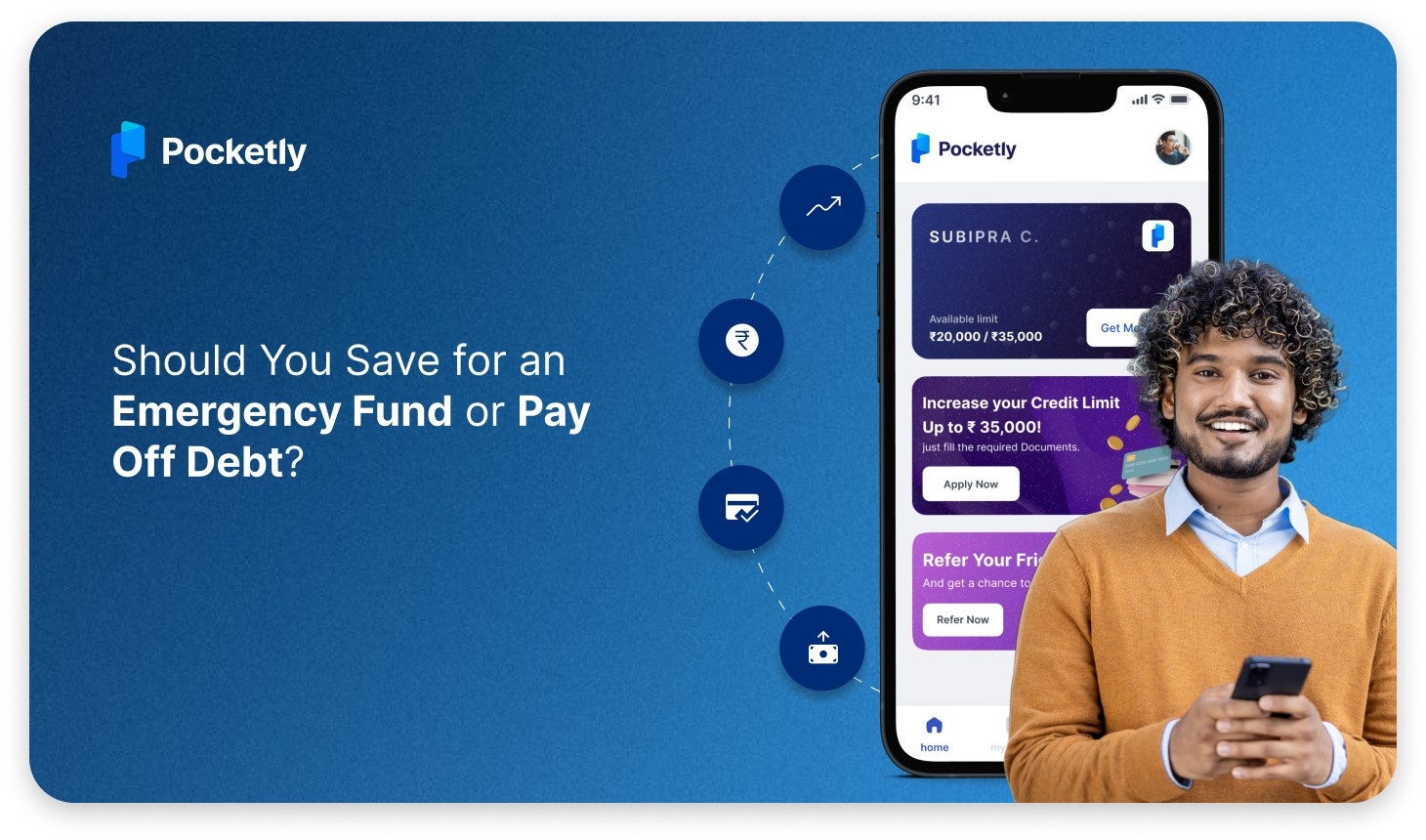
If you’re struggling to keep up with your loan repayments due to job loss, reduced income, or unexpected financial difficulties, loan restructuring could be the solution you need. Rather than defaulting on payments and damaging your credit score, restructuring allows you to negotiate new terms with your lender—a lower EMI, an extended tenure, or a temporary payment break.
This process benefits both you and the lender. You get more manageable repayment terms while the lender avoids loan defaults.
In this guide, we’ll break down who qualifies for loan restructuring, the steps involved, and what to consider before applying.
What is Loan Restructuring?
Loan restructuring is a financial relief measure that allows borrowers to modify their loan terms to make repayment easier. This is especially helpful if you face financial difficulties due to job loss, reduced income, or unexpected expenses. Instead of defaulting, you can negotiate with your lender to lower your EMIs, extend the loan tenure, or defer payments for a certain period.
By restructuring a loan, borrowers avoid legal consequences and protect their credit scores, while lenders reduce the risk of non-payment and financial losses.
Key Features of Loan Restructuring
- Modification of Loan Terms – You can request changes such as lower EMIs, interest rate adjustments, or extended tenure.
- Temporary Relief Through Moratoriums – Some lenders allow a grace period of up to two years before repayments resume.
- Conversion of Outstanding Interest – Any unpaid interest can be converted into a separate loan facility, reducing immediate payment burdens.
- Debt Settlement Options – In some cases, lenders accept a lump sum payment lower than the total outstanding amount to settle the debt.
- Approval Based on Financial Distress – Borrowers need to prove financial hardship, such as loss of income or medical emergencies, to qualify.
Purpose of Loan Restructuring
- Prevents Loan Defaults – Helps borrowers avoid legal actions, penalties, and damage to credit scores.
- Reduces Financial Strain – Allows repayment adjustments that match your current financial capacity.
- Ensures Business or Personal Stability – Provides relief for small businesses, salaried employees, and self-employed individuals facing economic downturns.
- Protects Borrower and Lender Interests – Lenders recover outstanding dues, and borrowers get fair repayment conditions.
- Improves Long-Term Financial Planning – Allows you to restructure your debt without taking on additional loans or financial burdens.
When managed correctly, loan restructuring is a smart financial move, helping you to regain financial stability without defaulting on their obligations.
Types of Loan Restructuring Options
Loan restructuring comes in different forms, depending on your financial situation and what your lender offers. Whether you need a temporary break from EMIs, reduced interest rates, or a way to clear debt faster, there are restructuring options to help you manage repayments more effectively.
Here’s a closer look at the most common loan restructuring options, how they work, and their benefits.
1. Loan Modification
Overview: Loan modification allows you to adjust key loan terms to make repayment easier. This could mean reducing your interest rate, extending the repayment period, or changing EMI amounts based on your financial capacity.
How It Works
- The lender reviews your financial situation and adjusts the loan terms accordingly.
- Common modifications include lowering interest rates, increasing loan tenure, or restructuring EMI schedules.
Benefits
- Reduces monthly EMI burden, making repayment easier.
- Lowers the overall interest cost if rates are reduced.
- Helps avoid loan default and legal consequences.
Example
If you have a ₹10 lakh personal loan at 12 percent interest for 5 years but are struggling with payments, your lender might reduce the interest rate to 10 percent or extend the tenure to 7 years, which lowers your EMI.
2. Debt Settlement
Overview: Debt settlement is an option where you negotiate with the lender to pay a lower amount than the total outstanding balance to close the loan. However, lenders usually offer this only when full repayment seems impossible, and since settlements are reported as "settled" rather than "fully paid," they can hurt your credit score, making future borrowing harder. While it reduces financial burden, debt settlement can leave a lasting negative impact on your credit history.
How It Works
- The borrower requests a reduced lump sum payment to settle the loan.
- The lender assesses the borrower’s financial situation and agrees on a final settlement amount.
- Once the payment is made, the loan is marked as “settled” instead of “fully paid”, which may impact the borrower’s credit score.
Benefits
- Clears outstanding debt at a lower cost.
- Helps avoid legal action and severe penalties.
- Provides financial relief for borrowers in distress.
Example
If you owe ₹5 lakh on a credit card loan but cannot repay the full amount, your lender may agree to settle for ₹3.5 lakh, considering your financial hardship.
3. Moratorium or EMI Deferment
Overview: A moratorium allows you to pause your EMI payments for a certain period, usually between 3 to 24 months, to help you recover from financial setbacks. However, interest continues to accumulate during this time.
How It Works
- The borrower requests a temporary break from EMI payments.
- The lender approves a deferment period based on financial hardship.
- After the moratorium ends, payments resume with revised EMIs to cover the interest accrued.
Benefits
- Provides immediate financial relief for short-term crises.
- Prevents your loan from being classified as a default.
- Gives you time to stabilise your finances before resuming payments.
Example
If you lose your job and are unable to pay your home loan EMI for the next six months, your lender may allow you to defer payments until you regain financial stability, though interest will still accumulate.
4. Loan Refinancing or Balance Transfer
Overview: Loan refinancing allows you to transfer your existing loan to another lender offering better terms, such as a lower interest rate or longer repayment tenure. This can help reduce monthly EMIs and overall interest costs. However, it’s only beneficial if the savings from the lower interest rate outweigh the processing fees and other transfer costs—otherwise, you might end up paying more than you save.
How It Works
- The borrower finds a new lender offering lower interest rates.
- The new lender pays off the existing loan and issues a fresh loan with better terms.
- The borrower starts repaying under the new agreement with reduced EMIs.
Benefits
- Lowers interest rates, reducing total repayment costs.
- Helps consolidate multiple loans into a single, manageable repayment.
- Provides flexibility in repayment with longer tenure options.
Example
If your home loan is at 10 percent interest, and another bank offers 8 percent interest, you can transfer the loan to the new bank to lower your EMI burden.
5. Converting Outstanding Interest into a Separate Loan
Overview: If you have unpaid interest on your loan, your lender may convert it into a separate loan with its repayment terms instead of demanding immediate payment.
How It Works
- The borrower requests that outstanding interest be separated from the principal amount.
- The lender creates a new loan for the unpaid interest, with a repayment schedule that suits the borrower.
- The borrower continues repaying the principal loan separately.
Benefits
- Reduces immediate financial burden by spreading payments over time.
- Helps avoid penalties and default classification.
- Makes repayment more structured and manageable.
Example
If you owe ₹50,000 in unpaid interest on a personal loan, your lender might allow you to convert it into a new 12-month loan, making it easier to repay in smaller chunks.
Choosing the right loan restructuring option depends on your financial situation and ability to repay. If you're struggling with your current loan terms, it's important to contact your lender early and discuss the most suitable restructuring plan.
Understanding these options can help you manage debt more effectively and avoid long-term financial strain.
Steps in the Loan Restructuring Process
Restructuring your loan can provide financial relief if you're struggling with loan repayments. The process involves evaluating your financial situation, negotiating with your lender, and formalising a new repayment plan.
Here’s a step-by-step guide to how loan restructuring works.
1. Assess Your Financial Situation
Before requesting restructuring, evaluate your current income, expenses, and outstanding debts. Identify how much you can realistically pay each month and determine whether you need lower EMIs, extended tenure, or a temporary payment pause.
2. Contact Your Lender
Reach out to your lender before missing payments to discuss restructuring options. Be prepared to explain your financial hardship, such as job loss, medical emergencies, or reduced income, and request modifications that suit your repayment ability.
3. Submit a Loan Restructuring Request
Lenders typically require a formal application along with supporting documents, such as:
- Proof of financial distress (salary slips, job termination letter, medical bills).
- Bank statements showing income fluctuations.
- Tax returns or business financials for self-employed borrowers.
4. Review Available Restructuring Options
The lender will understand and evaluate your request and offer restructuring options, which may include:
- Reducing the interest rate.
- Extending the repayment tenure to lower EMIs.
- Offering a temporary moratorium on payments.
- Converting outstanding interest into a separate loan.
5. Negotiate Terms and Conditions
Once an offer is made, carefully review the new terms and discuss any necessary adjustments. Before agreeing, check for any additional fees, revised interest rates, or potential credit score impacts.
6. Formalize the Agreement
If both parties agree to the new terms, the lender will issue a restructuring agreement outlining the revised loan terms. Ensure you read the document thoroughly and clarify any doubts before signing.
7. Resume Repayments as Per the New Plan
Once the restructuring is finalised, follow the new repayment schedule strictly. Timely payments will help improve your financial stability and maintain a healthy credit score.
The loan restructuring process offers relief for borrowers facing financial hardships, but it’s essential to act early, negotiate wisely, and stick to the revised repayment plan to avoid future complications.
Impact of Loan Restructuring on Credit Score
Loan restructuring can provide financial relief and has implications for your credit score. While it helps you avoid loan defaults and legal action, restructuring is often recorded on your credit report, affecting your future borrowing capacity.
Here’s how loan restructuring can influence your credit score:
- Possible Drop in Credit Score – Restructured loans may be flagged on credit reports, leading to a temporary drop in your credit score.
- Labelling of Loans – Credit bureaus may classify restructured loans as “Restructured” or “Settled”, which can signal financial struggles to future lenders.
- Impact on Future Loan Approvals – Some lenders may hesitate to offer you credit if they see past loan restructuring on your report.
- Timely Repayments Can Rebuild Credit – If you make regular payments after restructuring, your credit score can gradually improve.
- Less Damage Than a Loan Default – Loan restructuring has a lower negative impact than missed payments or a loan default.
When used wisely, loan restructuring is a helpful tool, but it’s important to understand the long-term impact on your creditworthiness and financial options.
Common Mistakes to Avoid in Loan Restructuring
Loan restructuring can be a great way to ease financial pressure, but if not handled correctly, it can lead to further issues. Awareness of these common mistakes can help you understand the process smoothly and make informed decisions.
- Waiting too long to request restructuring – If you are struggling with repayments, delaying your request can cause you to lose your credit score and limit your options. It’s always better to act early.
- Not assessing your actual repayment capacity – Extending your loan tenure may reduce EMIs, but if you do not evaluate your finances properly, you could still struggle with payments in the future.
- Ignoring how restructuring affects your credit score – Restructured loans may be flagged on your credit report, impacting your ability to get new credit.
- Overlooking hidden costs and fees – Lenders may charge additional processing fees, higher interest rates, or other costs, so always review the terms carefully before agreeing.
- Extending the tenure without considering the total cost – A longer tenure might seem like a relief, but it could result in significantly higher interest payments over time.
- Not considering alternative solutions – Sometimes, a balance transfer, debt consolidation, or temporary financial adjustments might be better than restructuring your loan.
- Missing payments after restructuring – Once your loan is restructured, staying on track with your new repayment plan is important to rebuild your financial standing and avoid further penalties.
Understanding these mistakes, you can ensure that loan restructuring works in your favour, helping you regain financial stability without unnecessary complications.
Pros and Cons of Loan Restructuring
Loan restructuring can be a lifeline during financial hardship, but it has advantages and drawbacks. Understanding the pros and cons might help you decide whether restructuring is right.
Pros of Loan Restructuring
- Prevents loan default and protects you from legal action by making repayment more manageable.
- Reduces your EMI burden by extending the loan tenure or lowering the interest rate.
- Helps you avoid damage to your credit score, which would be worse if you missed payments or defaulted.
- Gives you financial relief if you are facing temporary financial distress due to job loss, medical emergencies, or reduced income.
- Provides options like moratoriums or debt settlement, allowing you to recover without immediate financial strain.
Cons of Loan Restructuring
- It may lower your credit score as restructured loans are often flagged on credit reports.
- Can increase your total interest cost if the loan tenure is extended.
- Some lenders may impose additional charges or processing fees for restructuring.
- Future loan approvals may become more difficult as lenders view you as a high-risk borrower.
- Not all restructuring requests are approved, especially if the lender sees a high default risk.
Loan restructuring is a useful financial tool when used wisely. It’s important to weigh the short-term relief against the long-term impact before deciding. If you're facing financial strain, don't wait until you miss payments. Contact your lender today to explore restructuring options that keep your finances stable and credit score intact.
If you need a personal loan for emergencies, whether for an EMI, groceries, or unexpected expenses, Pocketly is here to make borrowing quick and hassle-free.
Why Pocketly is the Smart Choice for Instant Personal Loans
- Instant Approvals and Quick Disbursal:
- Pocketly prides itself on fast approvals, getting you the money you need almost instantly.
- Flexible Loan Amounts:
- Whether you need ₹1,000 for a small expense or ₹25,000 for something more significant, Pocketly offers a range of loan options to suit your needs.
- Minimal Documentation:
- Forget long forms and endless paperwork. Pocketly requires only essential documentation, making the process smooth and hassle-free.
- Transparent Fees:
- With Pocketly, there are no hidden charges. You’ll know exactly what the interest and fees are upfront, allowing you to plan confidently.
- Credit-Friendly:
- Even if your credit score isn’t ideal, Pocketly gives you a chance. It’s designed to be accessible, making it a great option when traditional lenders might turn you down.
- Flexible Repayment Options:
- Choose a proper repayment schedule that suits you, with options designed to fit comfortably within your budget.
Conclusion
Loan restructuring can be a practical solution when you're struggling with repayments, offering flexibility and financial relief during tough times. While it helps you avoid defaults and manage debt more effectively, it’s essential to consider the long-term impact on your credit score and overall borrowing capacity. By understanding the options, guidelines, and potential risks, you can make right decisions that align with your financial goals.
And if you ever need a quick personal loan for unexpected expenses, Pocketly is here to help. With instant approvals, flexible repayment plans, and minimal paperwork, getting a loan has never been easier.
Download the Pocketly app today and access funds whenever you need them!
FAQs
1. Does loan restructuring affect my credit score?
Yes, loan restructuring may be recorded on your credit report, potentially lowering your credit score. However, it has a lower impact than defaulting on payments, and making timely repayments after restructuring can help rebuild your credit over time.
2. Can all types of loans be restructured?
Most loans, including personal, home, business, and car loans, can be restructured. However, approval depends on the lender’s policies and your financial situation.
3. How do I apply for loan restructuring?
You must contact your lender, provide proof of financial distress, and submit a formal request. The lender will definitely review your application and offer restructuring options based on your eligibility.
4. Can I get a loan from Pocketly if I have a low credit score?
Yes, Pocketly considers multiple factors beyond your credit score, making it easier to get a loan even if your credit history isn't perfect.
5. How quickly can I get a loan with Pocketly?
Pocketly offers instant approvals, and once your loan is approved, the funds are transferred to your bank account within minutes.
6. What are the repayment options available with Pocketly?
Pocketly provides flexible repayment plans that allow you to choose an EMI structure that fits your budget, ensuring a smooth borrowing experience.

















